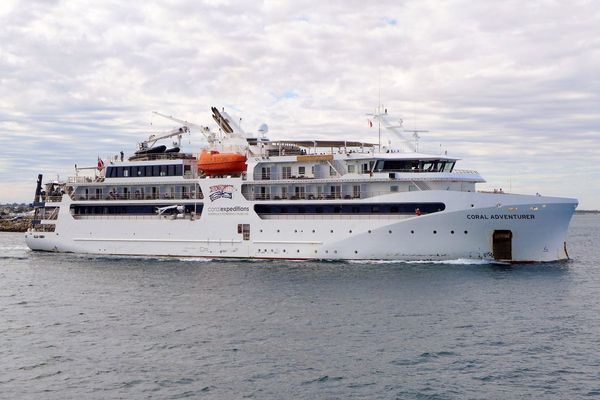
A pulley, a bucket, a smartphone and an e-SIM: this is how a “network tree” is built in Gaza. The goal is to provide as many people as possible with access to the internet. It’s not just for communicating with the outside world, but for keeping in touch with family and friends, coordinating relief efforts, locating the missing, and holding up a notion of community after it was torn to pieces by war.
Since the Israeli invasion began in October, Gaza has been an internet black hole, or nearly so. Traffic volume has plummeted. There are no more broadcast points because of air raids on telecommunications infrastructure, intentional blackouts enforced by the Israeli military and restricted access to electricity. According to IODA, a monitoring system run by Georgia Tech with support from the U.S. government, Gaza went from 95 percent internet connectivity on Oct. 6, 2023, to a number that varies from 1 percent to roughly 30 percent.
“Israel’s control is meticulous: Palestinian companies PalTel and Jawwal have been subjected to extensive blocks. Those inside Gaza are struggling to connect to a network,” Manolo Luppichini tells us. He is one of the driving forces behind Gazaweb, a collective project sponsored by ACS, an Italian NGO. Luppichini counts on the technical skills of ordinary people in Gaza who have made themselves available to create solutions to counteract the effects of the blackouts.
Gaza is a little strip of land, less than 140 square miles, squeezed between Egypt and Israel. Those who live in border areas of Gaza, and who have Israeli or Egyptian SIM cards, can still manage to connect, but after months of military attack and forced migration, that amounts to very few people.
The idea of building “network trees” stems from an attempt to get around the shortage of SIM cards, electricity and connectivity to the Gaza networks: “Since Oct. 7, it has been impossible to get classic SIM cards in. However, there are e-SIMs, a virtual version of the card you put in your phone,” Luppichini explains. “They are activated through a QR code. They’re generally used by tourists and entrepreneurs: they buy data packages so they can stay connected to the internet at all times, including while moving from one country to another.”
After a fundraising campaign in collaboration with the Italian Agency for Development Cooperation, known as AICS, Gazaweb has managed to send e-SIMs to many people via email or WhatsApp. QR codes are used to activate connections to Egyptian or Israeli repeaters, since those in Gaza have been destroyed. State-of-the-art smartphones are required, and since October, those have been flying off the shelves in Gaza. People fortunate enough to own them can put them to common use, creating a hotspot for dozens of people.
To reach a greater broadcast radius, the phone must be physically positioned as far above the ground as possible, so the signal can bypass physical obstacles. Buckets and pulleys are used for this purpose. “We are trying to create a network that is more grassroots and accessible,” Luppichini says. “With the fundraisers, we have purchased about 20 e-SIMs, concentrated in the Deir al Balah area. We are making contacts aiming to be able to send them to other areas as well. With AICS, we have a network of contacts who can support the work.”
There is another obstacle that needs to be tackled: the electricity needed to charge the smartphones. Luppichini shows us a power bank that fits in one hand, with several USB ports and a built-in solar panel. The goal is to get these inside Gaza, a complex operation given Israel’s meticulous control over every point of entry and every incoming item. Anything that produces power gets sent back. “Our hope is to deliver as many as possible so that these trees will flourish and go viral,” Luppichini says. “This is a political issue.”
Access to communication and information is a fundamental right recognized by the United Nations. In other settings, U.N. agencies have made efforts to take action. For instance, the World Food Program has a dedicated team, the Emergency Telecommunications Cluster, working to provide telephone and Internet connectivity to humanitarian organizations and civilian populations, making use of locally installed equipment.
Gaza is off limits to such equipment because of Israeli blockades, but connectivity could be established from inside the Egyptian border, covering large areas of Gaza. Another possibility is WiMax technology, a form of long-distance augmented WiFi that requires on-site equipment to be installed on rooftops or upper stories of buildings. With Israeli drones flying over every corner of Gaza, that may be a pipe dream: Any rooftop or house that hosts such equipment could end up in the crosshairs of the Israeli air force.
“In the absence of institutional intervention,” Luppichini concludes, “the most effective solution is e-SIMs. However, this is a Band-aid. Real repeaters would be needed, as has been accomplished in other places. Similar projects have started in Chiapas [Mexico] and Rojava [Syria]: They have set up alternative networks that provide both telephone and internet connection.”
While Gazaweb seems to be a largely symbolic initiative, it is a political and popular one, channeling energy both inside and outside Gaza. It provides financial support for the “web gardeners,” the network operators who “plant” the trees and make them accessible. As Luppichini puts it, “Gazaweb is a symbiotic, collaborative, community operation."






